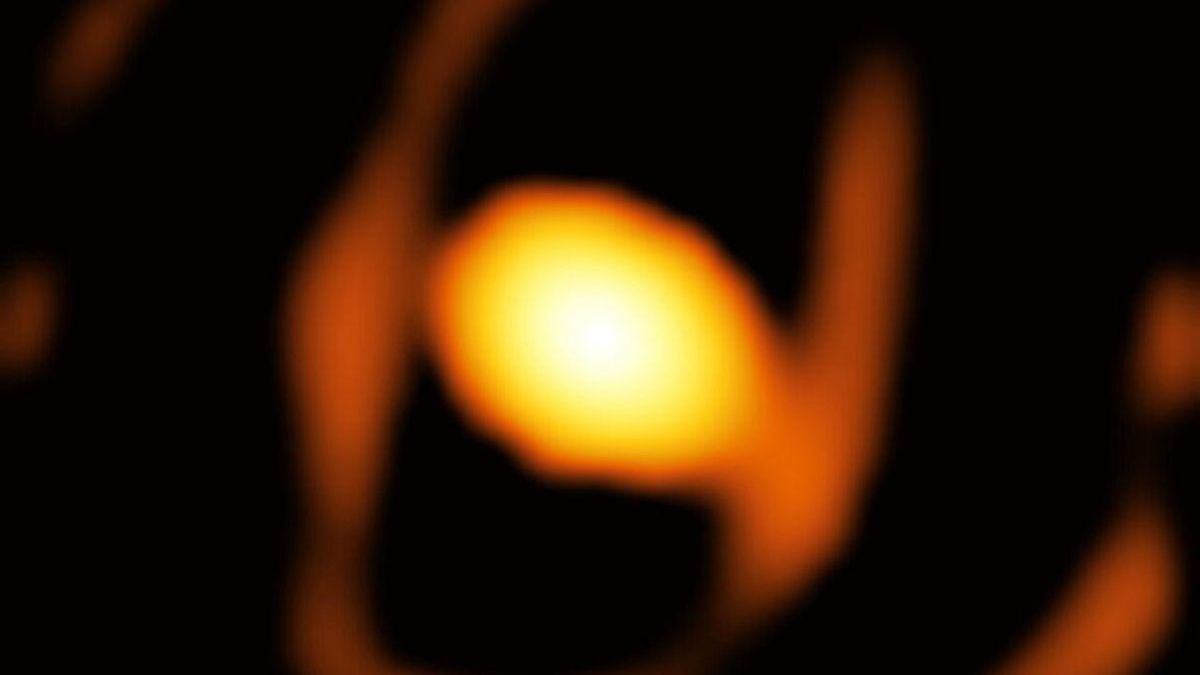They captured the first detailed image of a star outside the Milky Way.

Astronomers have captured the first close-up image of a dying star in a galaxy beyond our Milky Way: star WOH G64, observed by the European Southern Observatory’s (ESO) VLTI telescope. Scientists say that it is going through the last stage before exploding as a supernova.
The study, recently published in the journal Astronomy & Astrophysics and led by researcher Keiichi Ohnaka from Andrés Bello University in Chile, describes the first close-up image of an extragalactic star: VON G64located 160 thousand light years from Earth. This was assessed thanks to the Very Large Telescope Interferometer (VLTI) of the European Southern Observatory (ESO).
red supergiant WOH G64, located in the Large Magellanic Cloud, is 2,000 times larger than the Sun and has been observed by scientists since its discovery in the 1970s. Identified as one of the largest stars known today, as well as one of the brightest and most massive. structures of their type.
Observations of great importance
According to an article published in Universe Today, the star is surrounded by remnants of ejected stellar material, a fact that could indicate that it is preparing to explode. A more accurate analysis confirmed that the huge star is in the last stage before its appearance. exploded like a supernovamaking it a very important study object for astronomers.
“For the first time, we have been able to capture a magnified image of a dying star in a galaxy beyond our Milky Way,” astrophysicist Keiichi Ohnaka, lead author of the new study, said in a press release. New observations show the star is surrounded by gas and dust and with strong changes over the past 10 years, providing an excellent opportunity to analyze its final stages in real time.
In the final stages of their existence, red supergiants such as WOH G64 They shed outer layers of gas and dust.in a process that can last thousands of years. According to the researchers, this star is one of the most extreme of its type: any major change could bring it closer to an explosive end.
Shedding light on supernovae
Experts emphasize that the observation of this star far from our galaxy, which stands out in the region Large Magellanic CloudThe largest satellite galaxy surrounding the Milky Way may provide access to the most important information obtained to date about the birth of a supernova.
However, watching WOH G64 is becoming increasingly difficult: Dust covers star, which is becoming increasingly weak. Despite this, new observing instruments that will come into use in the coming years may help: they will be important in understanding what is happening in the star and preparing to evaluate the supernova and shed light on its mysteries.
Link
An image of the innermost circumstellar environment of the red supergiant WOH G64 in the Large Magellanic Cloud. K. Onaka et al. Astronomy and Astrophysics (2024). DOI: https://doi.org/10.1051/0004-6361/202451820
